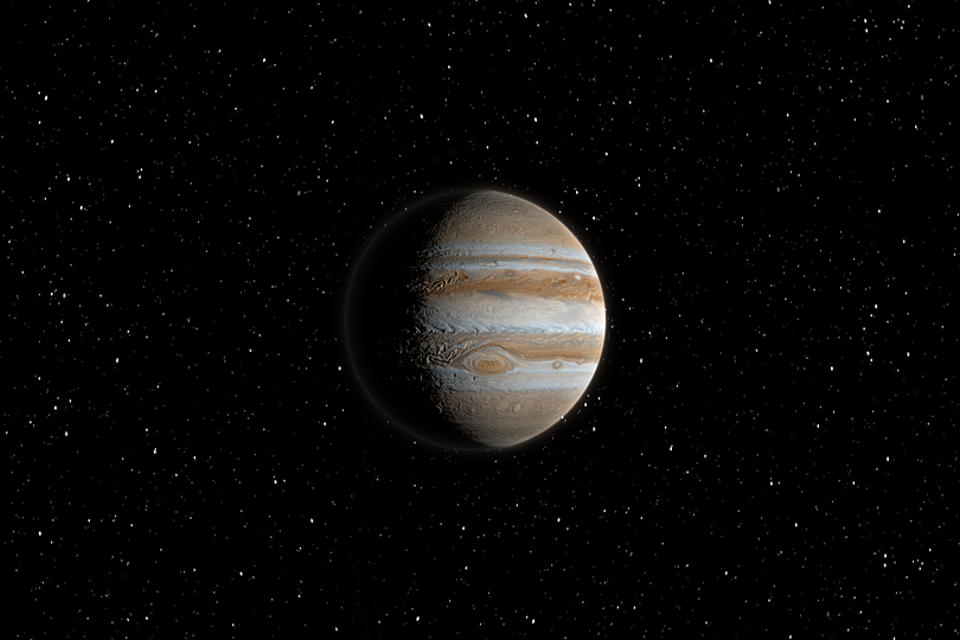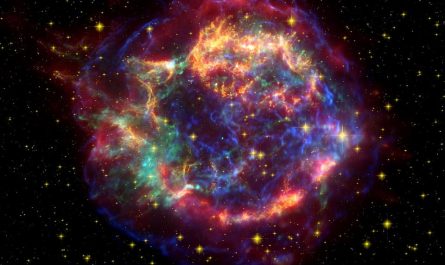How much do you know about Jupiter, the largest planet in our solar system? Sometimes referred to as “the king of planets”, Jupiter’s colossal volume could hold over 1,300 Earths! With 92 known moons or satellites, Jupiter has the most moons in the solar system – in fact, scientists anticipate discovering even more moons in the future. Let’s explore a collection Jupiter facts to help you take the universe by storm. We will learn about Jupiter’s climate, the geology of Jupiter, the history of Jupiter, life on Jupiter, and so much more!
General Facts About Jupiter
1. Jupiter is by far the largest planet in the solar system. (source) Jupiter has a radius of 43,440.7 miles, making it is over twice as massive as all other planets in the solar system combined! 11 Earths could fit across Jupiter’s equator. If Earth was grape-sized, Jupiter would be basketball-sized!

2. Jupiter is 484 million miles away from the Sun, or 5.2 astronomical units. (source) One astronomical unit is the distance between the Sun and Earth. At this distance, it takes sunlight 43 minutes to reach Jupiter. To put that into perspective, it takes sunlight 8 minutes and 20 seconds to reach Earth!
3. Jupiter is currently being explored by Juno, a solar-powered NASA spacecraft the width of a basketball court. (source) Juno launched on August 5th, 2011 and entered Jupiter’s polar orbit on July 4th, 2016. Juno has made some compelling discoveries such as Jupiter’s magnetic field being 16 to 54 times stronger than Earth’s and the presence of water near Jupiter’s equator.
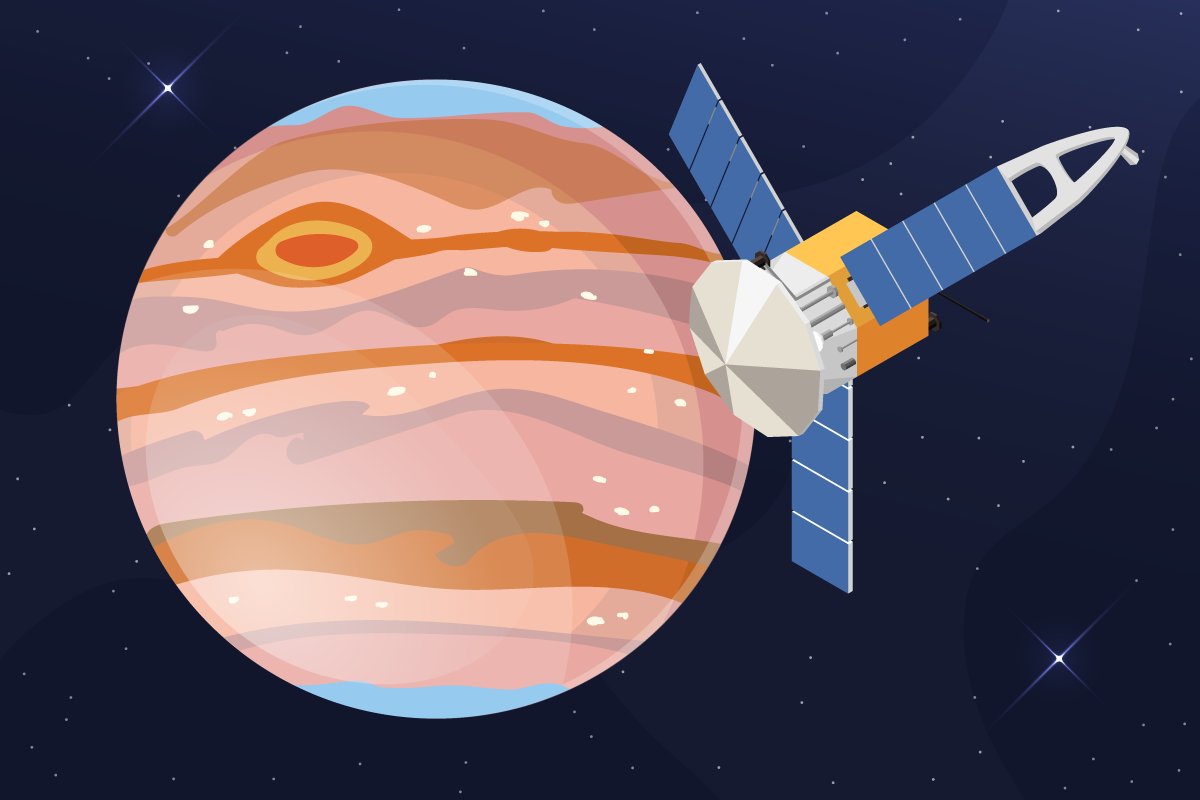
4. Juno’s breathtaking images and incredible discoveries earned it a 4-year mission extension through September 2025. (source) Juno has been able to get within 2,200 miles of Jupiter’s cloud tops, capturing extraordinary images and taking measurements that are vital to our understanding of the planet. Discoveries include colossal strokes of lightning, an abundance of water around the equator, mighty auroras, clusters of Earth-sized storms raging around both poles, and wind systems 1,000-2,000 miles below Jupiter’s cloud mantle. You can see Juno’s magnificent collection of images here.
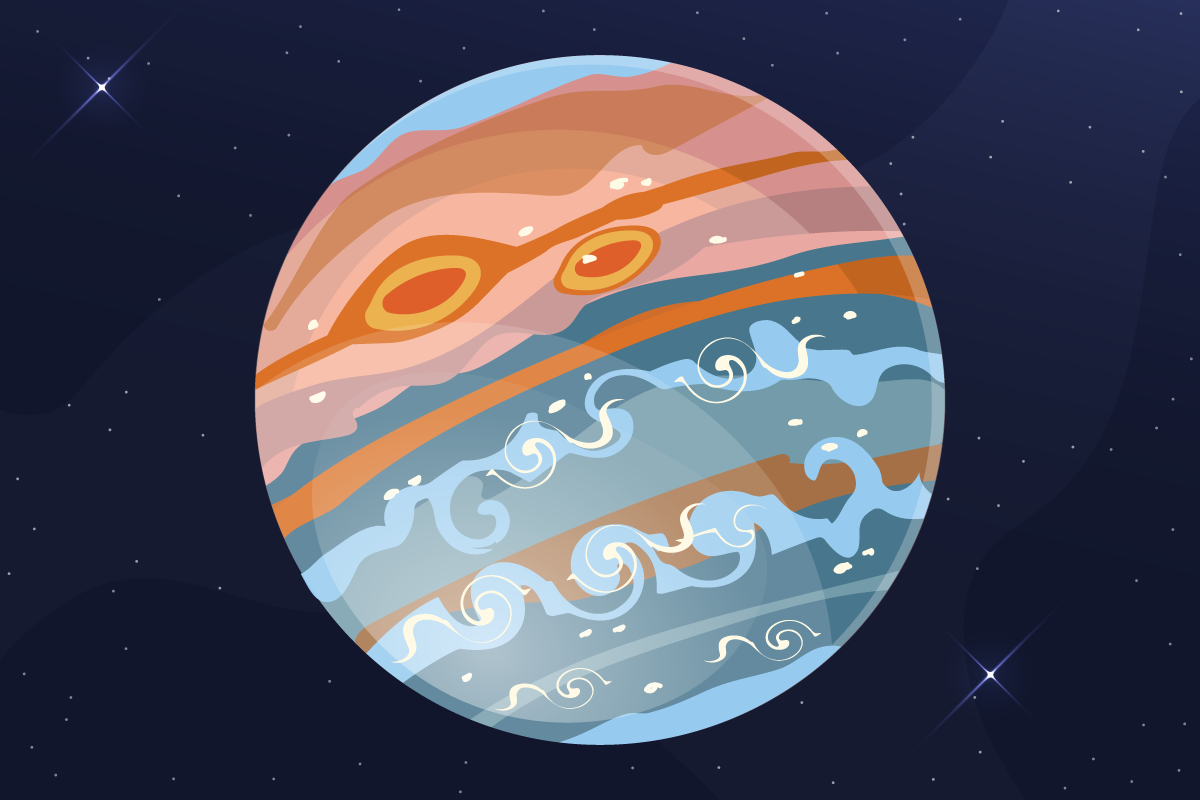
5. Jupiter has between 80 to 95 moons. (source) Jupiter’s four largest moons were the first to be discovered beyond Earth – Io, Europa, Ganymede, and Callisto. They are called the Galilean satellites after Galileo Galilei who first observed them in 1610. Io is the most volcanically active world in our solar system with hundreds of volcanoes that spew lava dozens of miles high. Europa is believed to have an iron core, rocky mantle, and salty ocean, making it one of the best places to look for life outside of our planet. Ganymede is the largest moon in our solar system. Callisto is the most heavily cratered object in our solar system.
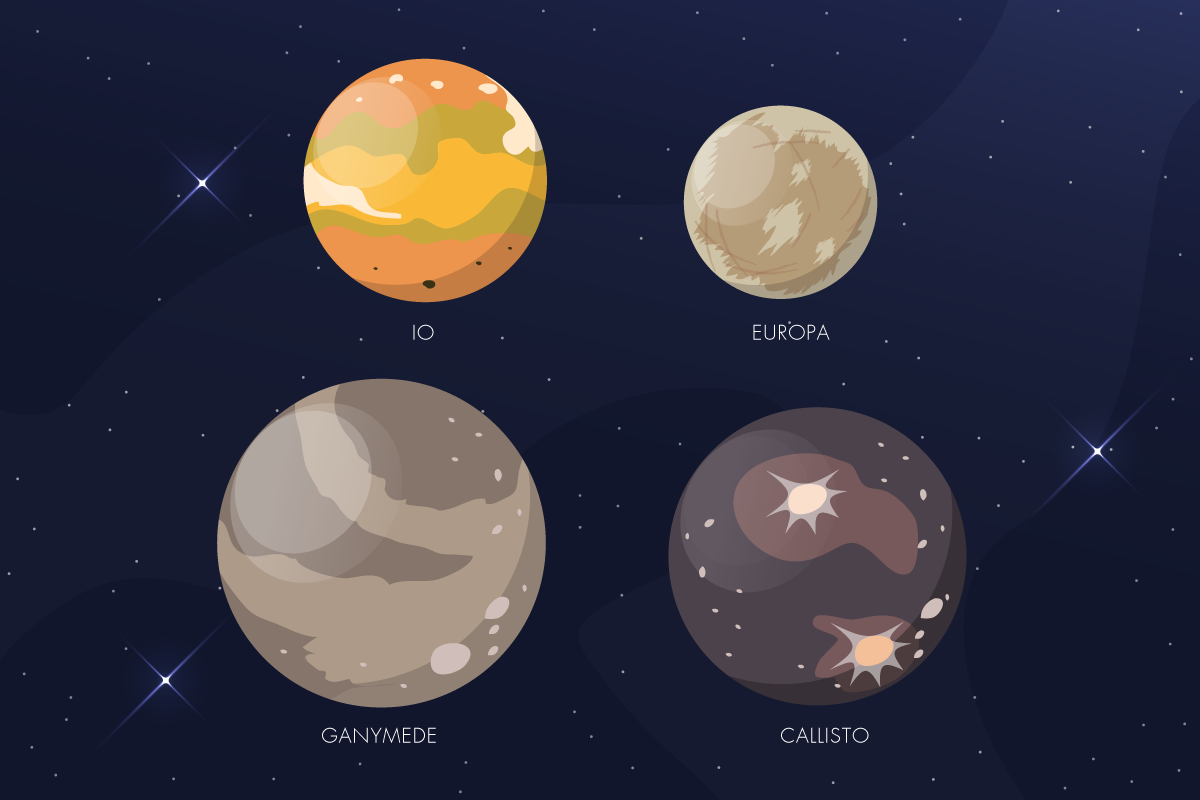
6. Ganymede is the only moon known to have its own magnetic field. (source) This magnetic field creates auroras, or bright ribbons of glowing gas, which circle the moon’s poles.
7. Jupiter has a faint four-part system of rings. (source) This dusty ring system is believed to be replenished by material deposited from the small moons Amalthea, Metis, Adrastea, and Thebe.
8. Jupiter has the shortest day in the solar system. (source) One day on Jupiter takes only around 10 hours (or the time it takes for the planet to spin around once).
9. A Jovian year is 11.9 Earth years. (source) Since its equator is tilted just three degrees with respect to its orbital path around the sun as opposed to Earth’s 23.5 degrees, it does not have significant seasons. Instead, is it believed to have a constantly stormy atmosphere.
10. Jupiter would have to 83 to 85 times more massive to become a small star. (source) To become a star, a celestial object needs to have enough mass to sustain nuclear fusion within their cores. The Sun has about 1,048 times more mass than Jupiter
11. Jupiter is brighter than any star in our solar system. (source) Jupiter shines at magnitude -2.8. Sirius, the sky’s brightest star, shines at magnitude -1.4.
12. The term ‘Jovian’ refers to things related to Jupiter. (source) It also refers to the giant planets of the outer solar system. The Jovian planets are Jupiter, Saturn, Uranus, and Neptune.
Facts About the Climate of Jupiter
13. Jupiter’s average temperature is approximately –234 degrees Fahrenheit. (source) However, Jupiter’s temperature varies significantly throughout the layers of Jupiter’s gas atmosphere. At the top of its atmosphere, it can reach temperatures as high as 1,340 degrees Fahrenheit. That is 600 miles from the planet’s surface!
14. Jupiter’s Great Red Spot spins counterclockwise at speeds beyond 400 miles per hour. (source) The massive crimson-colored storm has a vortex larger than Earth itself. Recent data has found that the average speeds in the Great Red Spot have been slightly increasing over the past decade.
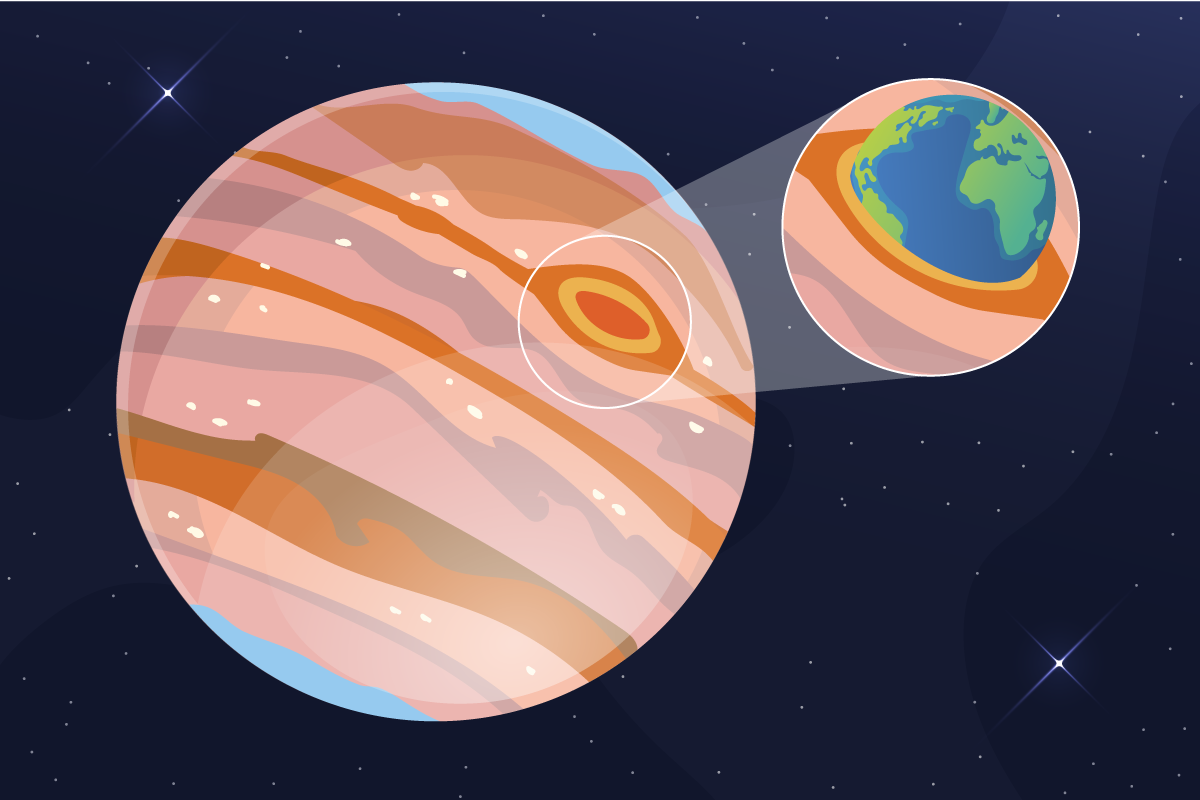
15. Jupiter’s distinctive stripes and swirls are actually frigid, blustery clouds of ammonia and water. (source) These clouds float in an atmosphere of hydrogen and helium. Jupiter’s vivid colors are believed to be plumes of sulfur and phosphorus-containing gases rising from the warmer interior.
Facts About the Geology of Jupiter
16. Jupiter has an extremely powerful magnetic field that compresses hydrogen into liquid. (source) As mentioned earlier, Jupiter’s magnetic field is much more powerful than Earth’s. On our planet, hydrogen is usually gas, but Jupiter’s pressure is so great that it it compresses it into a liquid. More on that below!
17. Jupiter is a gas planet, but that does not mean it could be passed through. (source) It is more like a fluid planet that becomes denser and hotter the further in, much like how a submarine experiences crushing densities the deeper it descends into the ocean. In fact, Jupiter’s main component, hydrogen gas, gets compressed to such extremes that it transforms into an exotic metallic form. This means that Jupiter has a 25,000 mile deep soup of bizarre fluid swirling within its interior. Space.com states: “So think of Jupiter as a bottomless ocean of strange, exotic materials.”
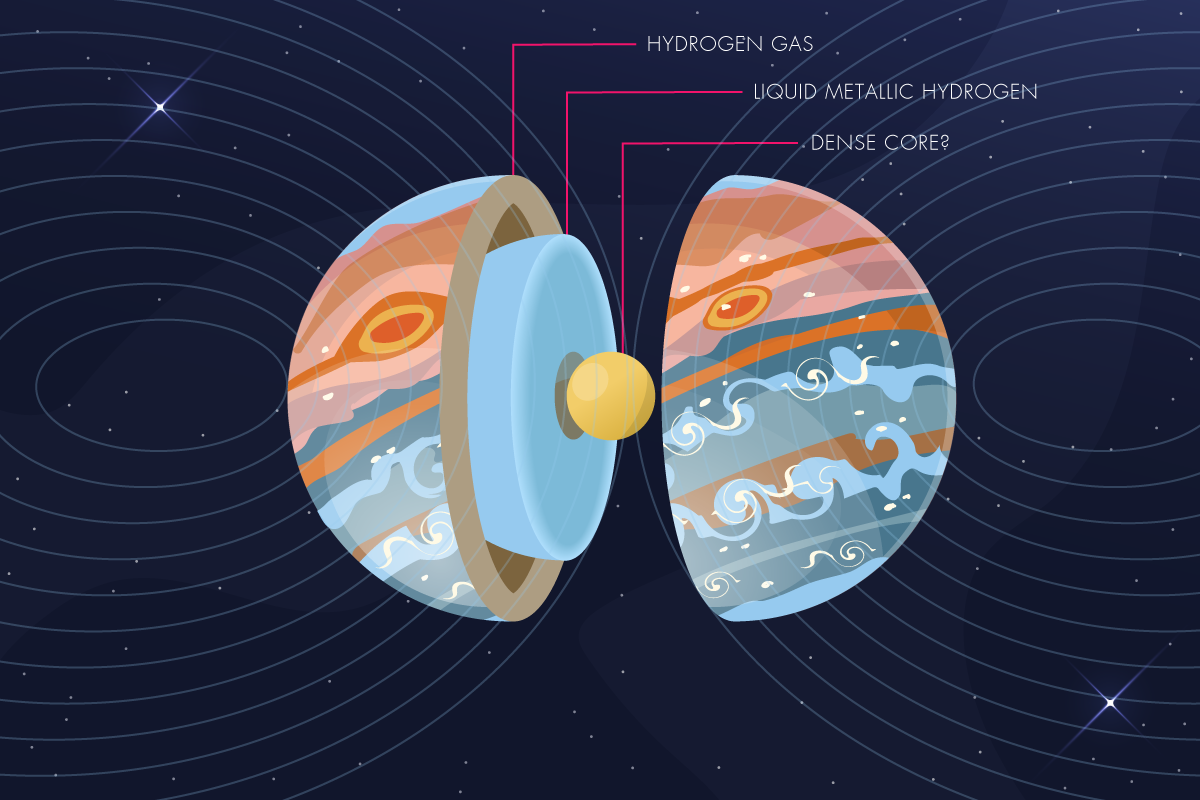
18. Jupiter’s gravity is 2.4 times greater than the surface gravity of Earth. (source) Despite its colossal size, the gravity on Jupiter is not significantly higher because it is made mostly of gases. If you weighed 100 pounds on Earth, you would way 240 on Jupiter.
19. Jupiter’s core is hotter than the sun. (source) It is around 36,000 degrees Fahrenheit! The sun’s surface is around 10,000 degrees Fahrenheit.
Facts About the History of Jupiter
20. Jupiter formed with the rest of our solar system around 4.6 billion years ago. (source) Gravity pulled swirling gas and dust together to create Jupiter. The gas giant took most of the mass left over from the creation of the sun, ending up with over twice the combined material of the other bodies in the solar system. In fact, Jupiter has all the necessary ingredients of a star, but it did not grow large enough to ignite.
21. The first recorded observations of Jupiter were done by Babylonian astronomers around 7th or 8th century BC. (source) They called it Marduk after the Patron God of Babylon, who was also the most powerful. Germanic tribes called the planet Donar, also known as Thor.
22. The ancient Chinese called Jupiter ‘Suìxīng’ and based their ordering system on the number of years (twelve) it takes to revolve around the sun. (source) This system was known as the twelve Earthly Branches. By the 4th century BC, these observations of Jupiter evolved into the Chinese zodiac. The Chinese still use the name when referring to years of age.
23. Jupiter is named after the king of the ancient Roman gods. (source) The Romans chose to the mighty moniker because Jupiter is the largest object in the sky. Juno, the spacecraft currently orbiting Jupiter, is named after Jupiter’s wife. According to ancient Roman mythology, the god Jupiter would hide behind clouds, but the goddess Juno was able to see through them. Equipped with an array of instruments, the Juno spacecraft is making that myth come true by analyzing what is beneath the planet’s tumultuous cloak of clouds.

24. Pioneer 10 was the first spacecraft to explore Jupiter. (source) Pioneer 10 launched on March 2nd, 1972 and began capturing images of Jupiter on November 6th, 1973 and continued exploring until January 2nd, 1974. It was able to return around 500 images of the planet and its satellites. Pioneer 10 outlived its planned lifespan and continued beyond Neptune and then Pluto and beyond, becoming the first human-made object to leave our solar system. NASA maintained regular contact with Pioneer 10 until March 31st, 1997, and then intermittent contact until the last signal was received on January 23rd, 2003, nearly 31 years after its launch and 7.6 billion miles from Earth. The final signal took 11 hours and 20 minutes to reach our planet. If an alien civilization ever finds Pioneer 10, they would find a plaque providing information on its creators and where it came from.
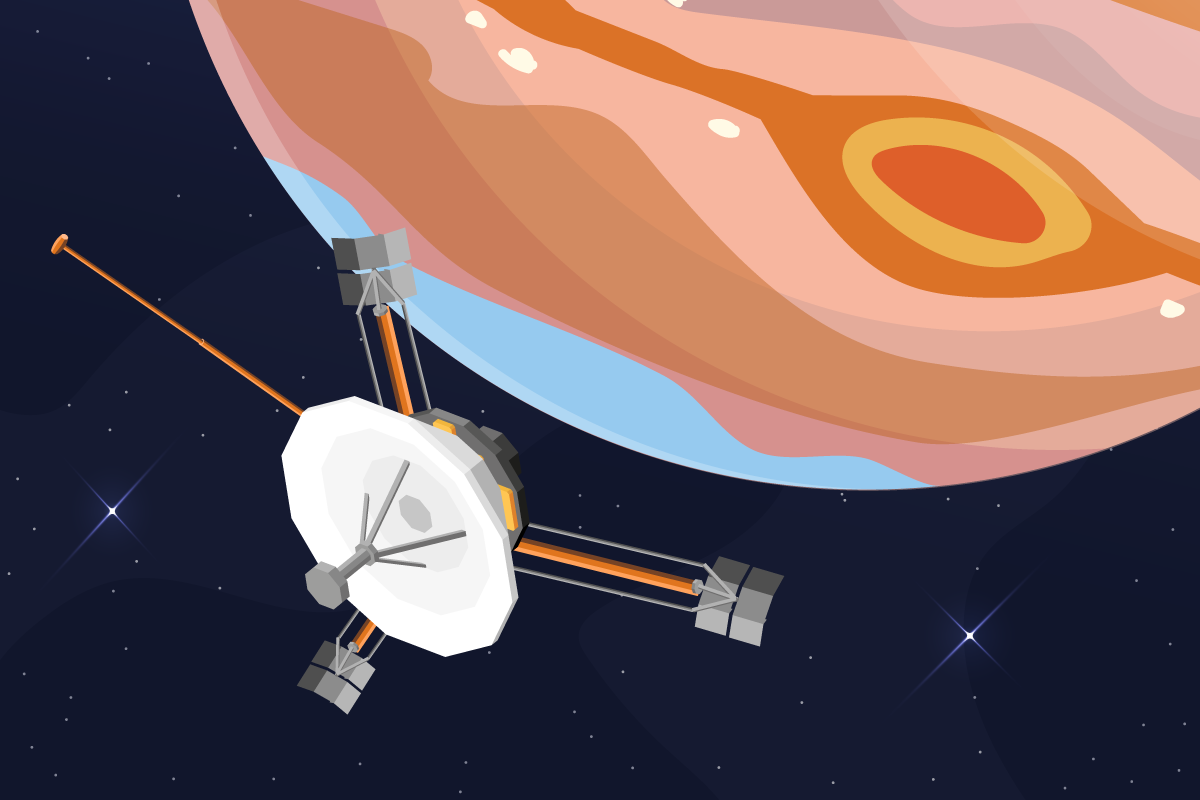
25. NASA’s Voyager 1 and 2 spacecraft flew past Jupiter in 1979. (source) They captured close-ups of the Galilean moons, revealing complex worlds of volcanoes and oceans. It also spotted Jupiter’s faint ring system.
26. The Galileo spacecraft launched on Oct. 18, 1989 to explore further Jupiter. (source) It managed to orbit Jupiter 34 times, making crucial discoveries along the way. So far, it is the only spacecraft to make a direct observation of a comet colliding with a planet’s atmosphere. (Shoemaker-Levy 9).
27. In April 2023, The European Space Agency launched the Juice spacecraft to study Jupiter’s three largest moons. (source) The name Juice is an acronym for Jupiter Icy Moons Explorer. Anticipated to arrive in 2031, the ESA states that the mission “will characterise these moons as both planetary objects and possible habitats, explore Jupiter’s complex environment in depth, and study the wider Jupiter system as an archetype for gas giants across the Universe.”
Facts About Water on Jupiter
28. Jupiter’s atmosphere contains water vapor. (source) Jupiter’s moons contain ice in many forms. Ganymede has water ice on its surface and likely has a vast ocean of salty liquid water deep below. Callisto is believed to have a surface composed of water ice and rock and is also likely to have a deep underground salty ocean. Europa has a water ice surface that is thought to be an icy shell encasing a liquid water ocean that could sustain life! More on that below.
Facts About Life on Jupiter
29. Scientists believe that life is possible on Europa, Jupiter’s fourth largest moon. (source) To determine the viability of a planet for life, scientists look for three key ingredients: liquid water, chemistry, and energy. In addition, life takes time to develop, so a world needs to be old enough for life to have formed. Jupiter’s icy moon Europa may have these ingredients and it is as old as planet Earth. Europa has a salty ocean beneath its icy crust that contains twice as much water as all of Earth’s oceans combined. Scientists suspect that there is a rocky seafloor at the bottom of Europa’s ocean which may supply chemical nutrients vital for life through hydrothermal activity.

30. NASA is developing a swarm of cellphone-sized robots to search for alien life on Europa. (source) Dr. Ethan Schaler of NASA’s Jet Propulsion Laboratory is working on a concept called Sensing With Independent Micro-Swimmers (SWIM) which was rewarded with $600,000 in Phase II funding from the NASA Innovative Advanced Concepts (NIAC) program in summer of 2022. These robots would be able to explore the oceans beneath Europa’s icy crust.
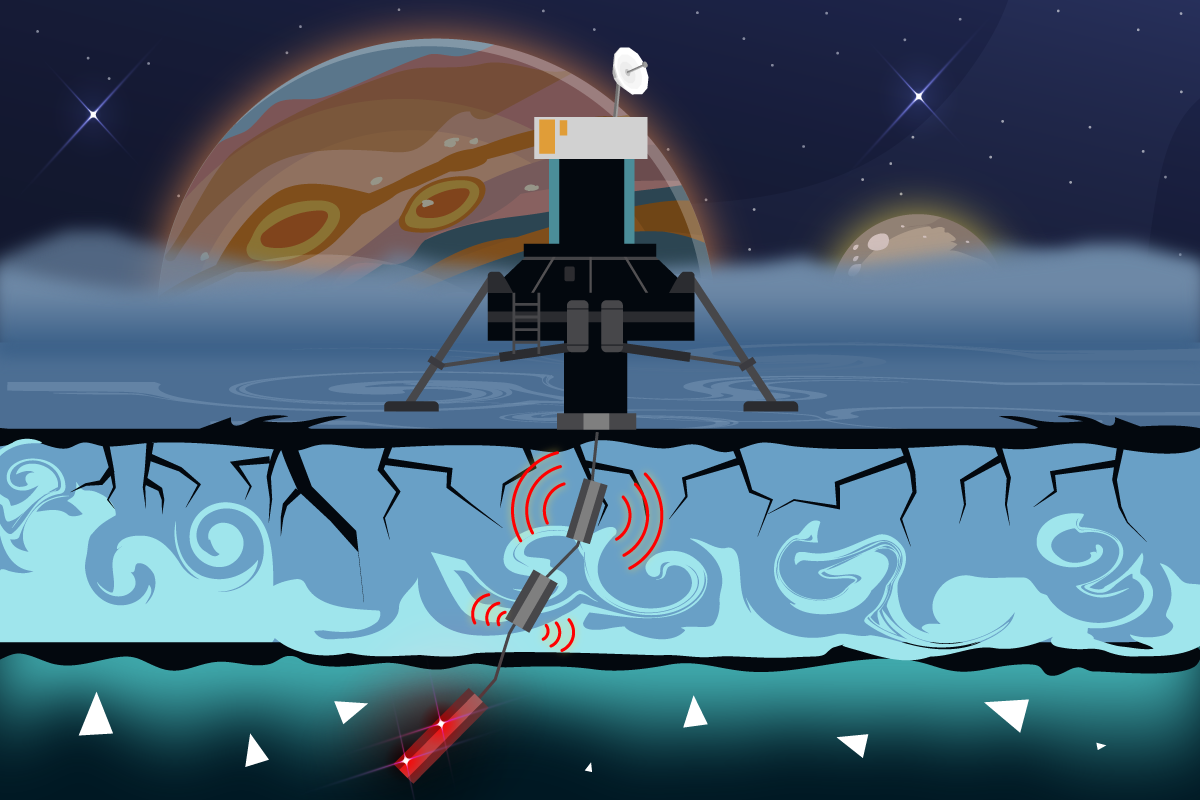
Can’t get enough space facts? If you enjoyed these facts about Jupiter, check out the other planet facts we have written about:

